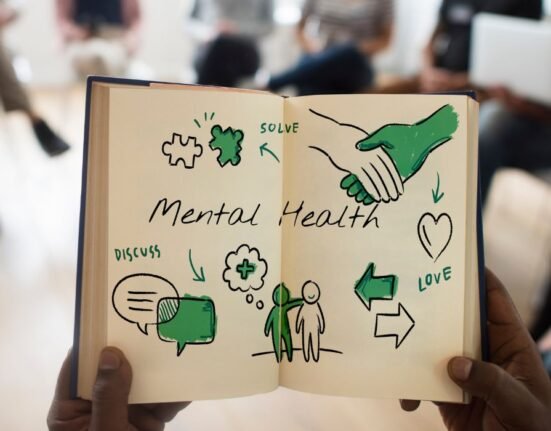There are and have been some acts that inflict a disturbing level of mental and physical trauma but their comprehension goes beyond that. There has been categorization established by the society and norms related to those things have also been created. Sexual offenses hold a very distinct position in Indian society and their perception is also at an extreme level. Sexual abuse in the form of rape, pedophilia, and incest is the one that concerns society more than any other kind of sexual abuse. Sexual abuse refers to a type of contact which involves physical and psychological coercion that cannot give the grounds for the contact. Sexual abuse highlights some kind of psychological disturbance in the person involved in such behavior and the person who is abused and experiences it on a greater level. Sexual abuse is the most prevalent form of crime that is heard about almost every day. It can be understood and can be a high possibility that offenders can have a mental disorder, but again it is not always like that. Other causes develop as a side effect of living in a society dominated by a patriarchal system and the conditioning influenced by that. Let us now look at the most common forms and how they impact in the most general sense as being a disorder.
It is a changing process as childhood is not defined with a similar age group in all cultures and countries. India has the world’s largest number of child sexual abuse cases. It is common at different ages of that period as well as in different socioeconomic structures. According to Human Rights Watch, 40% of children are homeless and vulnerable to sexual abuse, drug abuse, human trafficking, and crime. Child sexual abuse is an important matter of concern because it involves power and control over the victim and the victim can continue to experience it if he or she is not rescued. Victims often stay silent because they have a fear of embarrassment and also they feel that people won’t understand and accept it. Even if the victim gathers the courage to speak up but then he/she is not heard and the incident is brushed aside. This is a common practice in cases of child abuse because it has been observed that in many cases the abuser is a known person or a person from the family itself. People who are sexually abused during their childhood have a vulnerability to develop a disorder in their later life. They have a higher risk of developing anxiety disorders and substance abuse disorders. They develop vulnerability or risk of experiencing suicidal thoughts (Bruffaerts, 2010). It can be a difficult task to have reporting of the cases of child abuse as children do not always share those incidents and after a certain age when they realize that they have been abused but then they don’t feel like complaining about it.
Next is rape, it is the most common one and the one which is talked about the most. Rape has been classified as a sex crime that is motivated by lust and sexual desires but some feminist scholars in the 1970’s tried to change this understanding by bringing in the view that rape is motivated by the need to assert, need to dominate, and to humiliate a victim rather than a sexual desire for her. This perspective holds a position today as well but with it, there can be other significant reasons for rape. The reasons behind rape can differ from cultures to cultures, as there are different ways of raising individual and the models that they get to learn from also differs drastically. Another important aspect here can be the kind of law enforcement and the punishments given for the crime. It is obviously known that the kind of disturbances it creates in the life of the victim and family members. Disorders such as Post Traumatic Stress Disorder, depression, anxiety, and other problems such as feelings of anger, loss of self-image develop. It also impacts the victim’s sexual functioning, intimate relations, and understanding of it.
Another one might be not a common one as it is often not known and talked about. It is a pedophilic disorder. Diagnostic and Statistical Manual of Mental Disorder defines pedophilic disorders is diagnosed when an adult has, recurrent, intense sexual urges, or fantasies about sexual activity with a child. It is not necessary that acting the urges will lead to a diagnosis, just the desires are counted. According to the American Psychological Association, sex between an adult and a child is and will always be considered a crime. Nearly most of the pedophiles are males and their victims are both boys and girls. Pedophilia is first recognized usually in adolescence and persists over a person’s life. Many pedophiles engage in work with children or youth so that they gave access to children. Some pedophiles never act out their preferences but some do. Researchers have shown that people with pedophilia have lower IQ’s. It is not always that an individual with a pedophile will molest a kid. A study was conducted on German men who were seeking mental health services because of their pedophilic feelings. It was reported that 30% of them never had sexual contact with a child. The other aspect which was discovered was that most of the men viewed child pornography. Pedophilia has been a topic of concern because it gets difficult to conclude with regards to the crime. Like for say if a pedophile just molested a kid but he does not feel guilty. In this case, it is believed that the person has a mental disorder at the same time he has committed a crime.
Other sexual disorders can be considered to be taboo and unknown but they do exist. Disorders characterized by recurrent, intense sexually arousing fantasies, sexual urges, or behavior that generally involves abnormal targets and sexual attractions, unusual courtship behaviors, or a desire for pain and suffering for oneself or others are known as paraphilic disorders. Mild forms of these conditions probably occur in the lives of many normal people, a paraphilic person is distinguished on the degree of the sexual focuses and fantasies. It is very difficult to disclose the prevalence of people with paraphilic disorders because they feel reluctant to open about their thoughts and desires. There is a different disorder that comes under paraphilic disorders such as as- Fetishistic disorder, Transvestic disorder, Voyeuristic disorder, Exhibitionistic disorder, Fotteuristic disorder, and Sexual Sadism disorder. All these disorders involve a violation of the space and privacy of the other individual. Most of the time these disorders can be distinguished from being dangerous till the time the urges and fantasies are not acted out. Also how these disorders are perceived and understood in society plays an important role. Having the required knowledge and awareness that people with such urges do exist could make that individual actually talk about their thought and seek help for the same. Establishing the fact that such people with such fantasies and desires do exist can make us think about how anyone can be prevented from being harmed. The most important question arises that how to assess these offenses even if they are a result of paraphilic disorder and more importantly how they can be avoided. These disorders could be a reason behind abuse, but there are other factors such as rage and revenge. The fact that needs to be taken into consideration is that why and what causes or predisposes an individual to develop a certain form of thought pattern and what role has society been playing in setting norms and standards about such sensitives issues.












Leave feedback about this